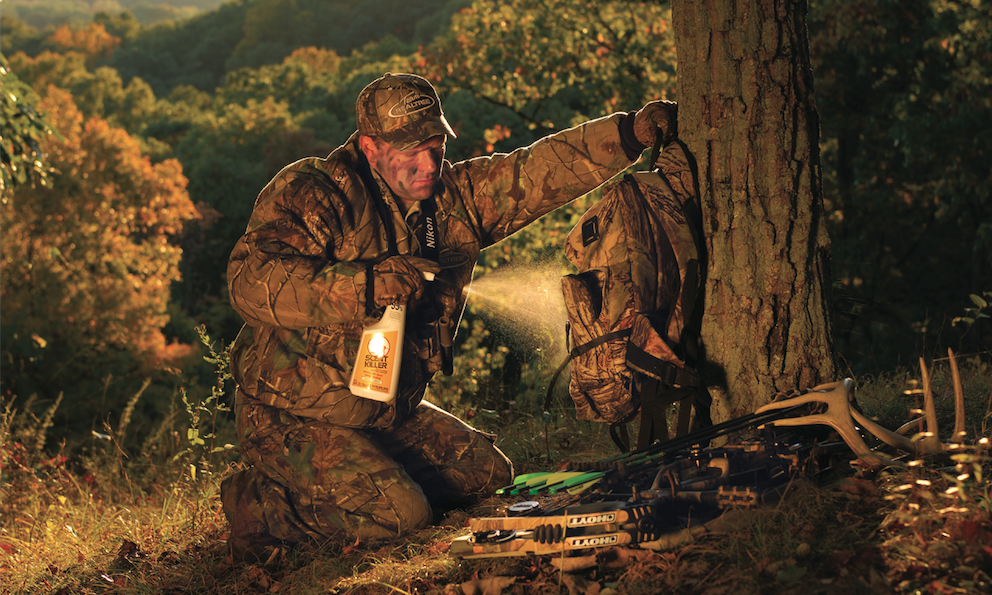We may earn revenue from the products available on this page and participate in affiliate programs. Learn More ›

Photography by Brad Herndon
Scent-control technology has its merits, but does it eliminate 100 percent of your stink? Rubber boots, scent-trapping clothing, and scent-neutralizing products used in combination can help to keep strange odors in your deer woods to a minimum. However, despite these highly touted, wallet-lightening measures, you still might be leaving traces of scent along the trail.
Did you remember to scent-wash your bow or rifle sling? Did you de-scent your knife sheath and belt? Is the release strapped to your bow carrying sweat from your summer practice sessions? If not, slight brushes with vegetation can leave hints of danger behind for a vigilant buck to discover.
Humans have five million or more olfactory chemoreceptors in our upper noses. These are situated on a postage-stamp-sized mucous membrane that detects airborne chemicals and gives you the ability to distinguish between more than 10,000 separate smells. Sounds impressive, right?
According to research from the University of Wisconsin–Stevens Point, whitetails have a longer olfactory system to analyze scent more efficiently with 60 times the olfactory sensors we have. So be sure to remove any last vestiges of yourself from the equation by charting a backdoor route to your stand and hacking a plant-free path to follow.
Scentless Steps
Begin your project by mapping an entrance-exit course that includes a prevailing wind to keep your airborne scent downwind of likely whitetail hangouts. You can begin the search at home. Use online mapping programs like ScoutLook Weather, which includes Google Earth maps and a scent cone graphic to display your projected scent dispersal in a given location. You can also compare winds at multiple hunting locations in order to choose the right stand. Topographic resources can aid your route search, but boots on the ground will likely be the best next step for access confirmation.
Recon starts by looking for backdoor approaches that circumnavigate any deer activity at dawn or dusk. As you scout routes, consider using terrain features to veil your downwind approach. Hills, ridges, coulees, ditches, and even old structures provide cover as you sneak into an ambush site. It doesn’t take much of a terrain feature to hide a human form. Some of the best features to utilize are dry creek- and riverbeds. High banks hide your form, and the beds are generally free of vegetation.
Note any main game trails and avoid crossing them if at all possible. Swing wide around them or move parallel to them to avoid leaving your scent in high-traffic areas. As you near a possible stand location, search for trees and hide possibilities downwind of where you expect whitetail action. Now is the time to take a lawn-service mindset.
By trimming stand access trails 100 to 200 yards from your stand, you create avenues where nothing will brush against your clothing or gear to alert deer to your presence.

